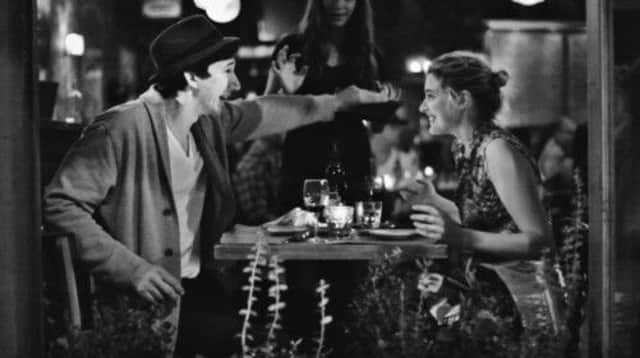Black and white films - a little bit off colour?


In the digital age, cinema should theoretically be a brave new world of shiny visual possibilities. And yet, for some film-makers, the future is not so much bright as black and white. Already this year we’ve had Joss Whedon’s black-and-white adaptation of Much Ado About Nothing and Noah Baumbach’s breezy Manhattan-esque indie flick Frances Ha.
Last month, a monochrome version of middle-age marital crisis drama Le Week-End opened in select UK cinemas. Next week sees the release of Sideways director Alexander Payne’s latest film, Nebraska, a grey-scale ode to the film-maker’s home state in which Bruce Dern plays a dementia-addled curmudgeon making a trip across the Midwest with his estranged son.
Advertisement
Hide AdWhat has prompted this mini-wave of monochrome mania? In interviews, Payne has said black-and-white just felt right from the moment he read the script for Nebraska – not a bad reason given that the film’s fine art-style cinematography provides an elegiac way of capturing the austere lives of those existing on the margins of once-thriving/now vanishing communities.
But underlying such aesthetic considerations is the simple fact that the switch to digital film-making over the last few years has made producing a black-and-white movie much easier. It wasn’t always this way. In the increasingly dim and distant days of celluloid, modern film-makers not called Woody Allen who wanted to work in monochrome had to justify it as a cost-cutting way to provide period authenticity. That’s partly how Martin Scorsese was able to pay formal tribute to On the Waterfront with Raging Bull when Hollywood was crying out for another Rocky.
But the lower cost of shooting and processing of monochrome film also made it a viable option for indie film-makers such as Spike Lee, Jim Jarmusch, Kevin Smith and, later, Darren Aronofksy and Christopher Nolan, to shoot their early features in black-and-white – regardless of when they were set. These days, however, that’s all moot. With digital, film-makers shoot in colour first and convert to black and white later. That’s how Payne shot Nebraska and how Whedon was able to inject a classic film noir feel into his contemporary take on Much Ado About Nothing.
Frances Ha was also shot in colour – and while Baumbach, ever the purist, claims never to have seen it in this way (he used a black-and-white monitor on set and began editing only after the switch was made), the technique gave him the freedom to create a more classically romantic look for his film than would have been possible using celluloid.
Of course, compromises still have to be made. There’s still a perceived resistance to black and white at the box office, something that forced Payne to shave around $3 million from Nebraska’s budget.
And Whedon could only really indulge his artistic whims because he shot Much Ado About Nothing for next to nothing in his own home while on a break from Avengers Assemble. Baumbach, too, has acknowledged that he had to make peace with the fact that Frances Ha would be worth less commercially than it would have been had he decided to make it a colour movie.
Advertisement
Hide AdBut the very fact that full colour versions of these films exist does raise the issue of whether two versions of a film could, or indeed should, be released. Given that Payne and Baumbach designed and lit their respective films to be watched in black and white, the cinephile’s answer to that dilemma is clearly no.
And yet it’s something film-maker Roger Michel had to confront when his new film, Le Week-End, went on general release last month. Though the director felt it looked better in black and white, the distributor released the colour version nationwide, restricting the director’s preferred version to a handful of specialist screenings. Would it have made a difference? That’s hard to say. The colour version was screened for press and received largely positive reviews.
Advertisement
Hide AdThat raises another point about whether or not black-and-white film-making in the digital age is just an affectation – an easy way of instantly conferring upon a film the classicism associated with a bygone era of film-making. Given Le Week-end’s themes and its Parisian setting, a black-and-white version would have made a more forceful connection to the French New Wave that inspired it, much like Frances Ha self-consciously evoked Manhattan’s romanticised view of contemporary New York life.
Cynics, however, need only look at mumblecore pioneer Andrew Bujalski’s new film Computer Chess to see that not every film-maker working in black and white is taking the easy option of flicking a different set of buttons. Though shooting on video, he used a vintage black-and- white Sony tube camera to plug us into the world of early 1980s tech-nerds. The result is a movie that looks like no other film released this or, indeed, any other year. Maybe it’s a brave new world after all.